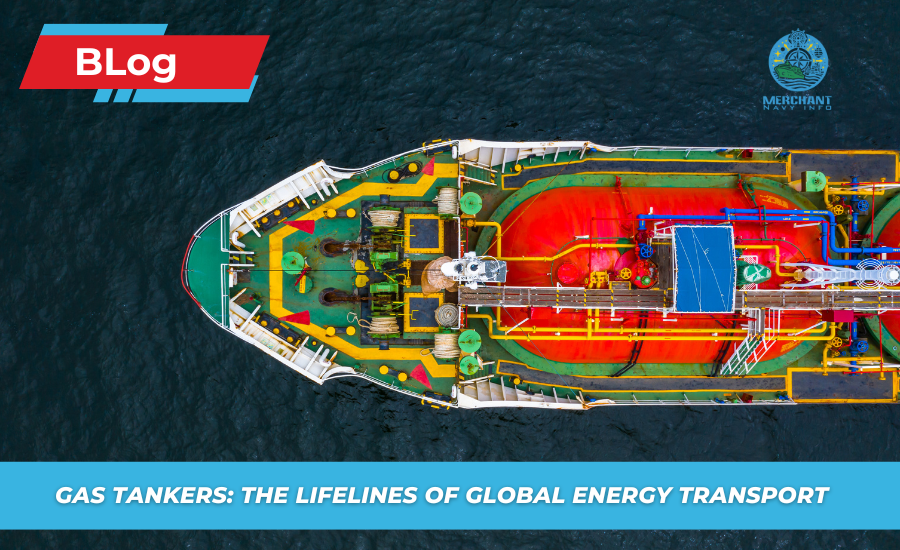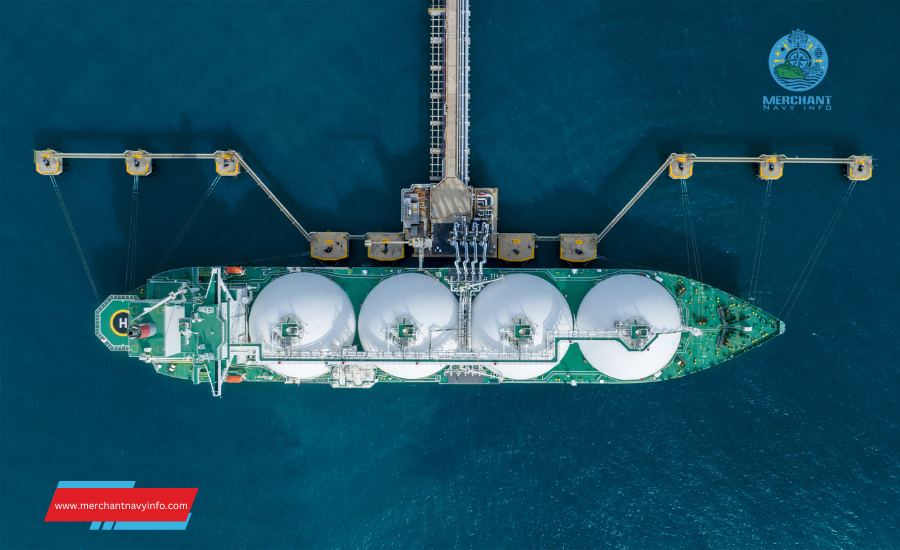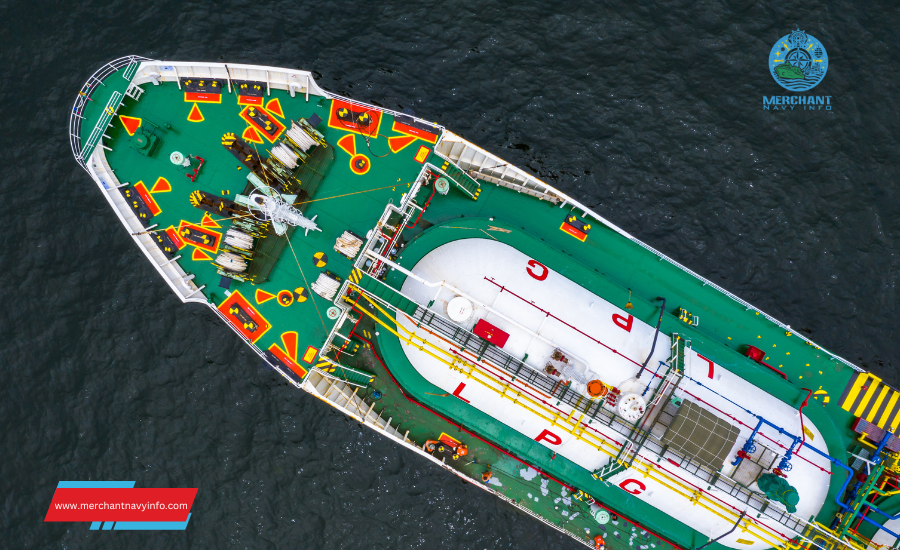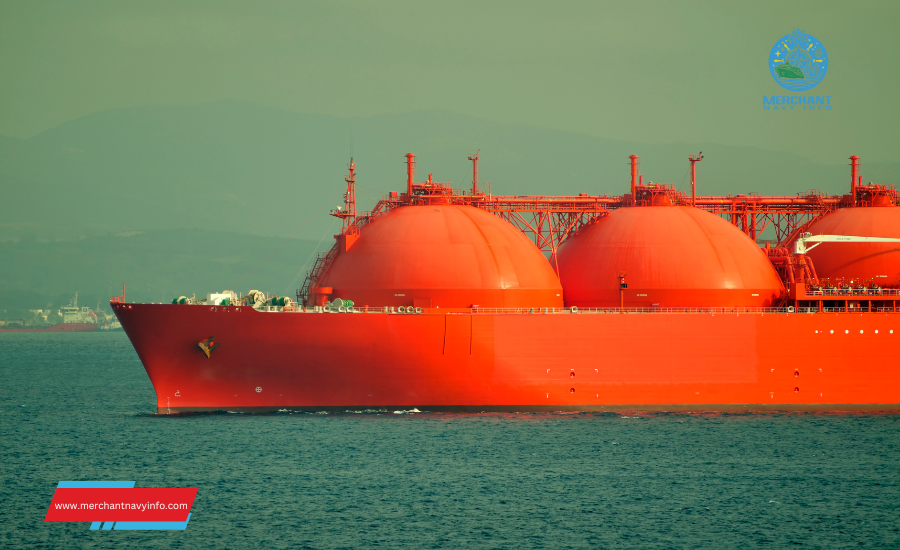
Gas Tankers: The Lifelines of Global Energy Transport
In the intricate tapestry of global energy supply, where countless threads intertwine to power the modern world, gas tankers emerge as the unsung heroes, their silent journeys across vast oceans weaving a vital lifeline. These colossal vessels, marvels of engineering and technological innovation, traverse the seas with a singular purpose: to deliver liquefied gases – the lifeblood of industries, homes, and economies – to the far corners of the globe.
With their sleek hulls cutting through the waves and cargo holds brimming with energy. Gas tankers represent the pinnacle of maritime engineering. Their construction is a testament to precision. Each vessel is meticulously designed and crafted to transport highly volatile substances safely and efficiently. Equipped with cutting-edge technology, these behemoths navigate the complexities of the high seas. Their voyages are guided by a symphony of sensors, satellite communications, and the unwavering expertise of their crews.
Understanding The Basics of Gas Tankers
At their core, gas tankers are specialized cargo ships built for a unique and critical task: the bulk transportation of liquefied gases. These gases, which include liquefied natural gas (LNG), liquefied petroleum gas (LPG), and a variety of chemical gases, exist in a delicate state, their liquid form maintained by extreme cold or immense pressure. This liquefaction process, a marvel of thermodynamics, drastically reduces the volume of these gases. Enabling their efficient transport in quantities that would be otherwise unimaginable.
Gas tankers’ crucial role in the global energy landscape cannot be overstated. They are the vital link between regions blessed with abundant gas reserves and those hungry for energy to fuel their growth. By bridging this geographical divide, gas tankers facilitate the seamless energy flow across continents. Ensuring a consistent and reliable supply to power industries, driving transportation networks, and providing warmth and comfort to countless households.
Gas tankers are the unsung heroes of the global energy supply chain. Their ceaseless voyages pump the lifeblood that sustains modern civilization. They are a testament to human ingenuity and our collective ability to harness the forces of nature to meet our energy needs. As the world evolves and the energy demand grows, the importance of gas tankers will only continue to rise.

Engineering, Safety, and Efficiency of Gas Tankers
Gas tankers are not merely vessels; they are floating fortresses of engineering, meticulously designed and constructed to safely transport some of the most volatile substances on Earth across vast oceans. Every aspect of their design, from the hull to the intricate network of pipes and tanks, is a testament to human ingenuity and the relentless pursuit of safety and efficiency.
Insulated Tanks: Preserving the Liquid State
In a gas tanker, the insulated tanks are designed to keep liquefied gases at extremely low temperatures, sometimes hundreds of degrees below zero. The tanks have multiple layers of insulation materials and vapor barriers to minimize heat transfer. Also, to prevent the cargo from warming and expanding, which could lead to serious problems. However, the tanks undergo rigorous testing and inspections to ensure their integrity throughout their lifespan.
Specialized Piping Systems: A Network of Precision
A network of specialized piping systems orchestrates the safe and controlled flow of liquefied gases within a tanker. These systems are far more complex than conventional ships, which must handle fluids at extreme temperatures and pressures. Furthermore, the pipes are often made of exotic materials like stainless steel or nickel alloys. They were chosen for their strength, corrosion resistance, and ability to withstand thermal stress. The system has many safety valves, pressure gauges, temperature sensors, and other monitoring devices. However, all work in concert to ensure the cargo remains stable and contained throughout the voyage.
Vapor Recovery Systems: Minimizing Environmental Impact
Liquefied gases tend to evaporate, even at low temperatures. Gas tankers are equipped with vapor recovery systems to minimize the release of these vapors into the atmosphere, which could contribute to greenhouse gas emissions and pose safety risks. These systems capture any escaping vapors and either process them into liquid form or safely burn them off. This reduces the environmental impact of the tanker’s operation and helps maintain a safe working environment for the crew.
Safety Systems: A Multi-Layered Approach
The safe operation of a gas tanker is not left to chance. These vessels are equipped with a comprehensive suite of safety systems designed to prevent accidents and mitigate their consequences should they occur. Fire suppression systems, including water deluge and foam systems, are strategically placed throughout the ship.
Emergency shutdown systems allow for the rapid isolation of cargo tanks or sections of the piping system in the event of a leak or other anomaly. Gas detection systems continuously monitor the atmosphere for any signs of escaping gas, providing early warning of potential hazards. However, the crew undergoes extensive training in emergency procedures, and regular drills are conducted to ensure preparedness.
Top 3 Types of Gas Tankers
The world of gas tankers is not monolithic; it’s a diverse and specialized fleet, with each vessel meticulously designed and equipped to handle specific types of liquefied gases. Nevertheless, this specialization is crucial, as different gases have unique properties and require distinct containment and handling procedures.

LNG Carriers: Masters of the Deep Freeze
Firstly, Liquefied natural gas (LNG) carriers are the behemoths of the gas tanker fleet. They are purpose-built to transport vast quantities of LNG, primarily composed of methane. Maintaining LNG in its liquid state necessitates an extremely cold environment, typically around -162 degrees Celsius.
Additionally, to achieve this, LNG carriers employ sophisticated cryogenic containment systems, often featuring massive, heavily insulated tanks capable of withstanding the immense pressures and temperatures. These vessels are marvels of thermal engineering, their design and construction pushing the boundaries of material science and insulation technology.
LPG Carriers: Balancing Pressure and Containment
Secondly, Liquefied petroleum gas (LPG) carriers, while similar in concept to LNG carriers, are designed to transport a different cargo: LPG, a mixture primarily composed of propane and butane. Unlike LNG, which requires cryogenic temperatures, LPG can be maintained in a liquid state at ambient temperatures through pressurization.
Therefore, LPG carriers feature robust pressurized tanks capable of safely containing the cargo under pressure. Additionally, these vessels strike a delicate balance between structural integrity and weight optimization, ensuring the safe transport of LPG without compromising the vessel’s efficiency.
Chemical Gas Carriers: Versatility and Adaptability
Lastly, Chemical gas carriers are the chameleons of the gas tanker fleet. Their design and configuration allow them to transport various chemical gases, including ammonia, ethylene, and propylene. These gases exhibit diverse physical and chemical properties, necessitating specialized containment and handling systems. Chemical gas carriers often feature multiple independent cargo tanks, each tailored to its specific gas requirements.
Depending on the cargo, these tanks may be pressurized, semi-pressurized, or fully refrigerated. The piping systems on these vessels are equally complex, designed to safely and efficiently transfer various gases with varying corrosiveness, toxicity, and flammability levels.
How Gas Tanker Works?
The journey of a gas tanker is a complex and carefully orchestrated process involving multiple stages:
- Loading: Firstly, the liquefied gas is carefully loaded into the tanker’s tanks at the loading port, adhering to strict safety protocols and environmental regulations.
- Voyage: Then, tanker embarks on its voyage, navigating vast oceans and adhering to international maritime regulations. Moreover, the crew diligently monitors the cargo and vessel systems to ensure a safe and efficient journey.
- Unloading: Further, upon reaching the destination port, the liquefied gas is carefully unloaded from the tanker’s tanks, again following stringent safety procedures.
- Maintenance and Inspection: Also, the tanker undergoes regular inspections to ensure its continued seaworthiness and compliance with safety standards.
Gas Tankers and the Environment Sustainability
While gas tankers play a vital role in meeting global energy demands, their environmental impact is a subject of ongoing scrutiny. The transport of liquefied gases involves the combustion of fossil fuels, contributing to greenhouse gas emissions. Additionally, accidental spills or leaks can have detrimental effects on marine ecosystems.
The industry is actively working to mitigate the environmental footprint of gas tankers through various initiatives:
- Energy Efficiency. Shipbuilders and operators continuously strive to improve gas tankers’ energy efficiency through advancements in hull design, propulsion systems, and operational practices.
- Alternative Fuels. The exploration of alternative fuels, such as liquefied natural gas (LNG) and hydrogen, is gaining momentum to reduce greenhouse gas emissions from gas tankers.
- Spill Prevention and Response. Stringent safety protocols and advanced technologies are employed to prevent spills and leaks. In the event of an incident, robust response plans are in place to minimize environmental damage.

The Future of Gas Tankers
The future of gas tankers is intertwined with the evolving global energy landscape. Above all, the demand for liquefied gases will shift as the world transitions towards cleaner and more sustainable energy sources.
- Renewable Energy Integration: Initially, gas tankers may transport liquefied gases derived from renewable sources, such as green hydrogen and bio-LNG.
- Technological Advancements. Further, continued advancements in ship design, propulsion systems, and digital technologies are expected to enhance gas tankers’ efficiency, safety, and environmental performance.
- Regulatory Framework: Also, evolving international regulations and environmental standards will shape the future design and operation of gas tankers.
Conclusion:
Often overlooked in the grand energy supply scheme, gas tankers are the lifelines connecting gas-producing regions with energy-consuming markets. As a concluding fact, these colossal vessels, engineered with precision and operated with unwavering dedication, ensure the safe and efficient transport of liquefied gases, powering industries, fueling transportation networks, and warming homes across the globe.
As the world navigates a complex energy transition, gas tankers will play a vital role in meeting global energy demands. While striving for a more sustainable future through technological advancements, operational improvements, and a commitment to environmental stewardship. However, gas tankers will remain indispensable in the intricate web of global energy transport.









